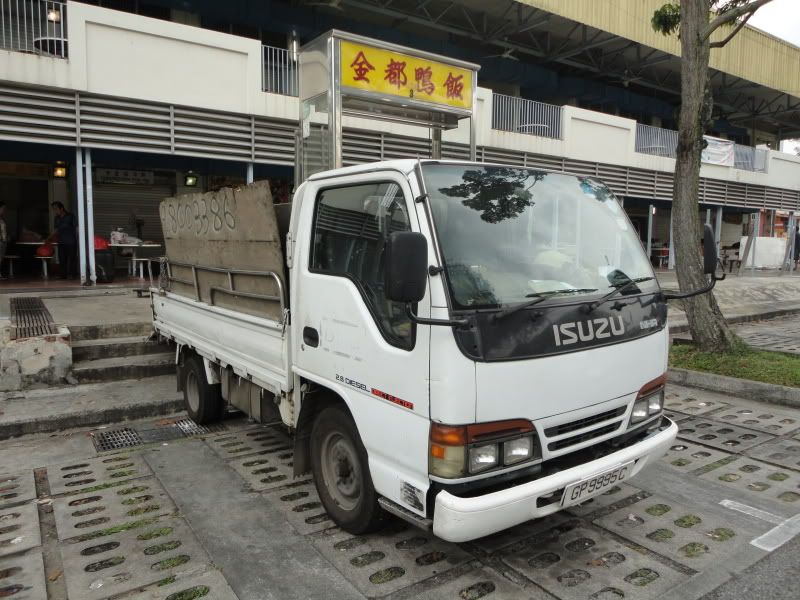You are here: Home » My Father and I , Places , recent » Singapore Improvement Trust (SIT) Flats in Queenstown
Singapore Improvement Trust was an organisation established by the British colonial masters in the 1927 to improve to living conditions of Singaporeans after a housing commission was conducted by the colonial government in 1918. It started functioning in 1920 with the recruitment of Captain Edwin Percy Richards. However, it was not constituted as a legal entity until the Ordinance was passed in 1927. Acute housing shortage at the period meant that almost 200 people were living in Telok Ayer's shop houses at each point of time. The first project undertaken by SIT was the creation of Tiong Bahru, regarded as the first public housing estate in Singapore.
Postwar Singapore was troubled by severe housing shortages caused primarily by a surge in the population due to baby boom. While funding and manpower shortages were problems within the SIT, the Trust had other responsibilities such as constructing new roads and open spaces. A Housing Committee was therefore set up in 1947 within the SIT to tackle the severe housing crunch in Singapore.

Princess Estates was one of the First Estates Built after the Setting Up of Housing Committee in Queenstown
Planning for what was to become Singapore's first satellite estate, Queenstown, began in 1953. A total size of 465 ha was earmarked by the British government through acquisition by the Commission of Land since 1926 for town improvement and extension. This stretch of land was bounded by Alexandra Road, Holland Road, North Buona Vista Road, the Malayan Railway and Tanglin Halt (as shown in the map below).

The British Planning of Queenstown Estate, Similar to MyQueenstown's Map of Queenstown =)
In 1954, there was an estimated number of 400,000 Singaporeans living in squatters. A New Towns Working Party was therefore formed to lay out the principles for the design and construction of the proposed new towns. These principles covered the planning, urban design and architectural standards for new towns and the facilities required to support the community. Though SIT did not implement these plans fully, they has actually planned the finese details for Queenstown estate such as working out the ratios of amenities to the number of residents.
For example, planning for 50,000 residents, the SIT proposed to build one shop for every 150 residents; 18 primary schools for 10600 pupils; every neighbourhood was to have one market, one small community centre and a shopping centre consisting a few shops. The main town centre would have a comprehensive health centre, shopping complex and cinemas. This idea was later retained by Housing Development Board, contrary to claims that HDB has "planned" for these town centres.
A total of 5 neighbourhoods were planned for Queenstown, namely Princess Estate (now Dawson & Strathmore), Duchess Estate (where Blk 39A and Blk 6C are presently), Tanglin Halt, Commonwealth and Queens' Close & Crescent. A principal commercial centre was located in Duchess Estate.

Aerial View of SIT's vision of Princess Estate
The planning of Queenstown occurred around the same time as English New Towns built after World War II back in UK. The Working Party recommended a population of 53,000 for Queenstown (Queenstown's population is about 55,000 today). It proposed that 2 people will share a single room and an average dwelling of the size of a 2-room flat will house an average of 6 people. This recommended density would be achieved by mixing tall blocks with low rise blocks so that there will be variety and beauty in Queenstown's skyline. Such intricate planning ensured Queenstown "function as a self contained and balanced community with an unique identity".
Residential flats in Duchess Estate
Affordability was SIT's primary concern while building these flats. In addition to these flats planned, terraces were built to attract the affluent people. Therefore, dwellings of different sizes were planned.
Terraces along Queenstown in 1954
When SIT was dissolved in 1959, only Princess Estate was completed and work had just begun in Tanglin Halt, Queen's Close and Duchess Estate. The development of Queenstown was completed by HDB, who added two more neighbourhoods, Buona Vista & Mei Ling/Stirling. Amenities such as sports complex and hawker centres were later developed to enhance the standard of living in Queenstown.

Boys staring Out of their Balcony in a SIT Flat in Princess Estate
Lived in SIT Flats? Tell us your experience in our facebook page now!
Category: My Father and I , Places , recent
Related posts:
If you enjoyed this article, subscribe to receive more great content just like it.
Subscribe to:
Post Comments (Atom)








POST COMMENT
4 comments:
Nice article, bring me a lot of memory about queenstown. Good work!
What a historical nice article. Thank you for sharing it here. Good job done.:)
Thank you for posting the history of the real estate in Singapore. This is very educating indeed!
we give out loan of all kinds in a very fast and easy way, Home loan, Student loan, Business loan, Investor loan etc.we offer loan to every individuals, firms, and company that are in need of financial assistance in a low interest rate of 3%. contact us: powerfinance7@gmail.com
Post a Comment